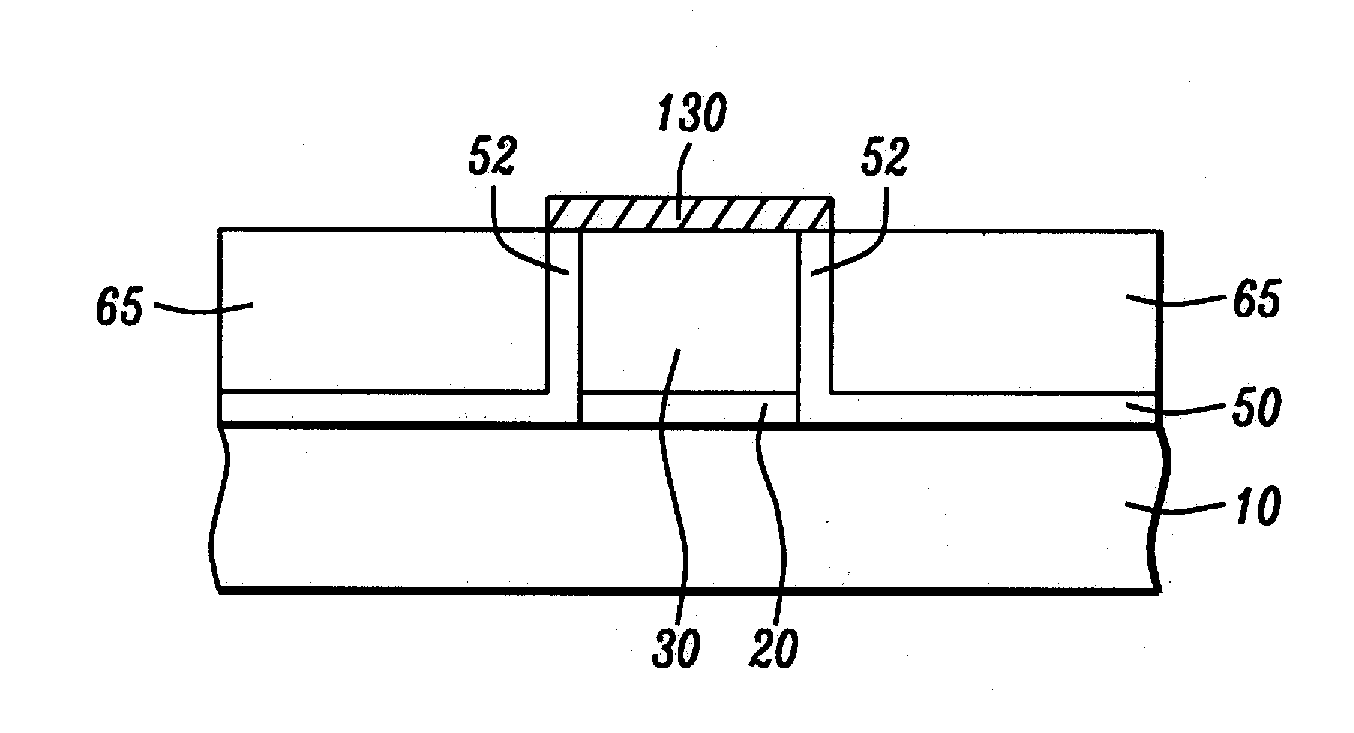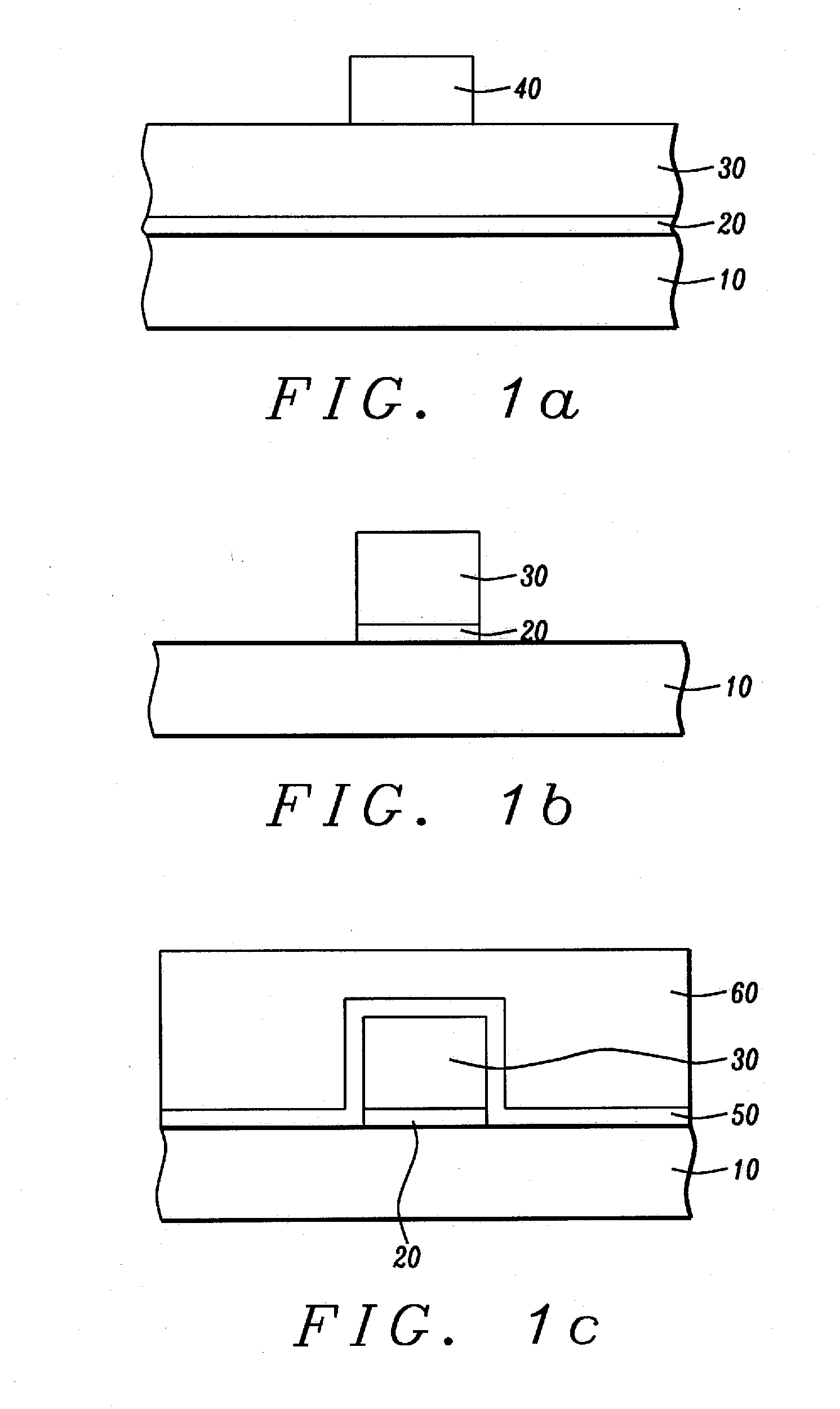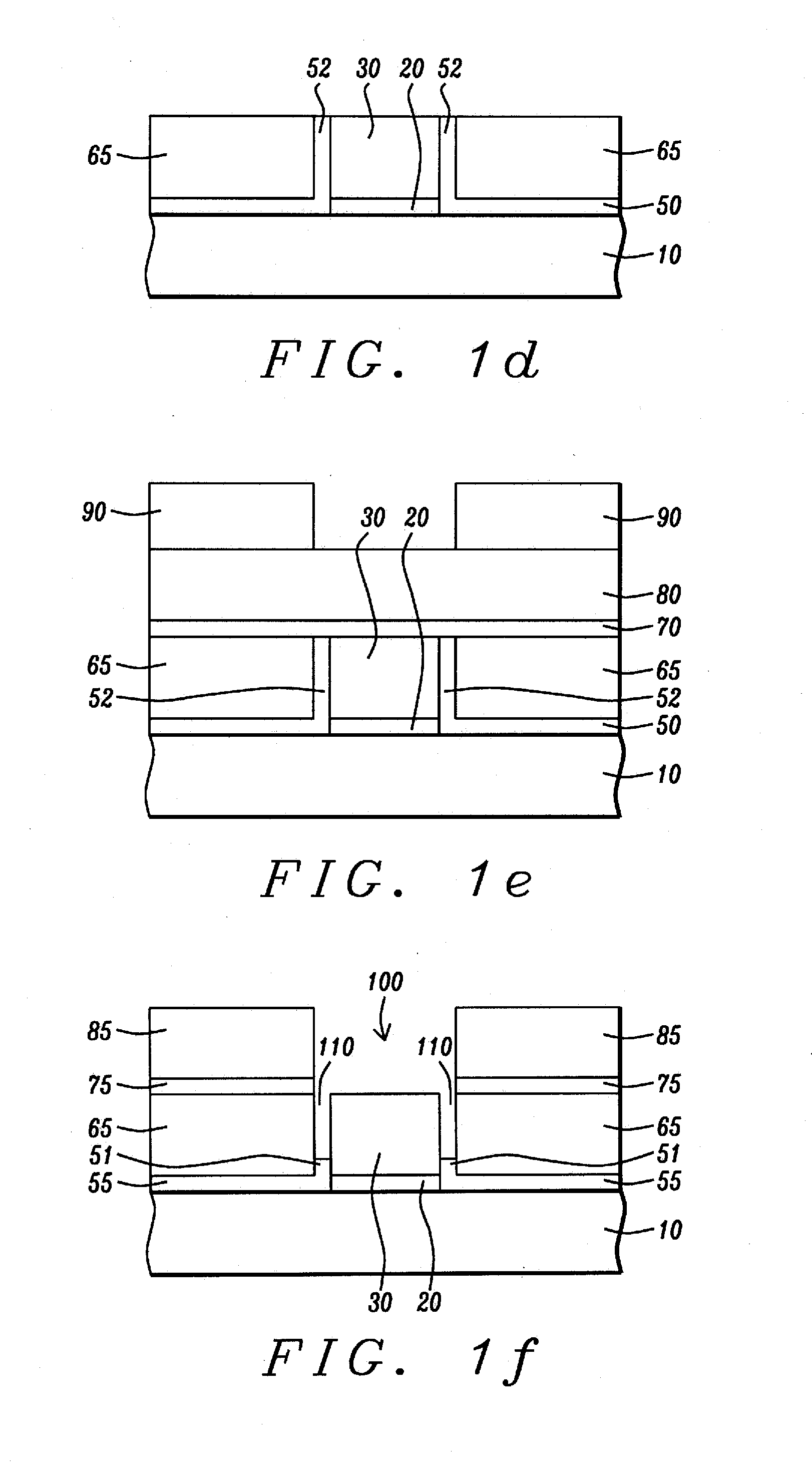Metal Protection Layer over SiN Encapsulation for Spin-Torque MRAM Device Applications
a technology of metal protection layer and mram device, applied in the field of magnetic devices, can solve the problems inability to address the specific problem of oxidation and its prevention, and inability to achieve the specific effect of oxidation and prevention, and achieve good etch selectivity and significant improvement of the functional properties of the final tj structur
- Summary
- Abstract
- Description
- Claims
- Application Information
AI Technical Summary
Benefits of technology
Problems solved by technology
Method used
Image
Examples
Embodiment Construction
[0014]The present disclosure provides a method for providing continued protection of a thin film deposition against oxidation, such as in protecting a tunneling magnetic junction (TJ) device, during subsequent processing steps. It is to be noted, however, that there is a great variety of thin film depositions that will also be afforded the desired protection using this method. Any deposition in which oxidation prevention layers, such as SiN layers, are applied to exposed surfaces of oxidation-prone layers, are subject to the possibility that the oxidation protection layer will itself be degraded during processing. The present method provides additional protection to the already present oxidation protection layer so that critical regions of that layer receive additional and continual protection.
[0015]Referring first to FIG. 1a, there is shown a schematic illustration of the first step in the formation of an exemplary TJ structure, such as would be protected by the present method duri...
PUM
| Property | Measurement | Unit |
|---|---|---|
| thickness | aaaaa | aaaaa |
| thickness | aaaaa | aaaaa |
| thickness | aaaaa | aaaaa |
Abstract
Description
Claims
Application Information
 Login to View More
Login to View More - R&D
- Intellectual Property
- Life Sciences
- Materials
- Tech Scout
- Unparalleled Data Quality
- Higher Quality Content
- 60% Fewer Hallucinations
Browse by: Latest US Patents, China's latest patents, Technical Efficacy Thesaurus, Application Domain, Technology Topic, Popular Technical Reports.
© 2025 PatSnap. All rights reserved.Legal|Privacy policy|Modern Slavery Act Transparency Statement|Sitemap|About US| Contact US: help@patsnap.com



